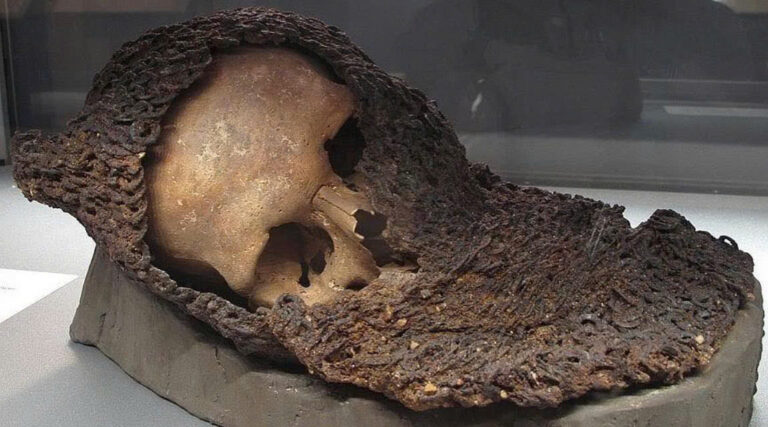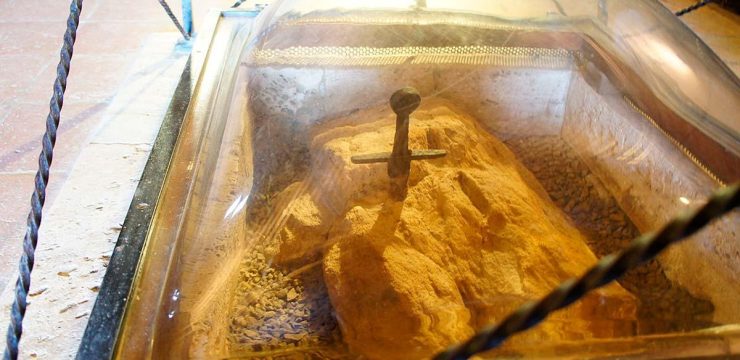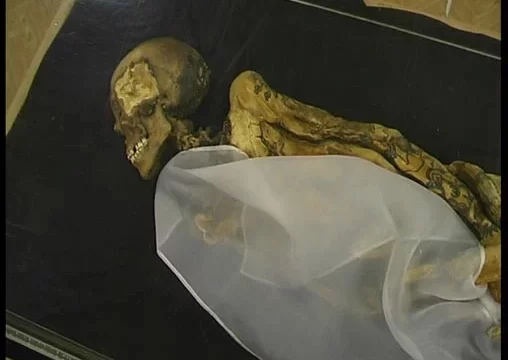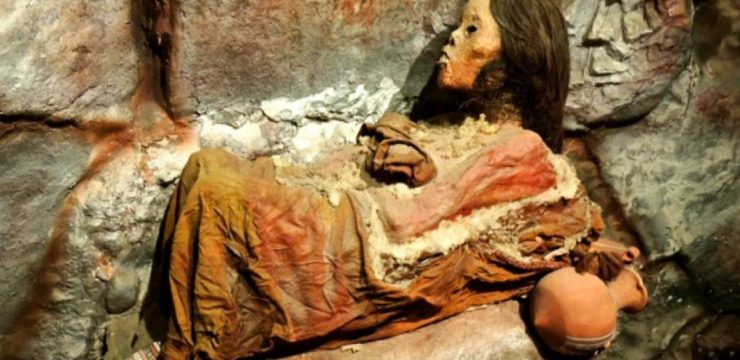Throughout the course of history, few archaeological discoveries evoke as much fascination as the haunting remains of a medieval warrior—his skull fused permanently with his chainmail armor. This eerie relic, unearthed from the battle-scarred fields of Visby, Sweden, serves as a powerful and poignant window into one of the bloodiest and most consequential conflicts of the 14th century. Encased in rusted iron and human bone, this grim artifact speaks volumes about the brutal reality of medieval warfare and the extraordinary sacrifices made by those who fought on the front lines.

The Stage is Set: Gotland, 1361
The island of Gotland, an important trading hub in the Baltic Sea, found itself at the center of an escalating conflict. This strategically positioned stronghold was a prized asset, sitting at the crossroads of maritime commerce and under the influence of the powerful Hanseatic League. However, by the early 1360s, Gotland’s political and economic status had drawn the attention of an ambitious and ruthless leader—King Valdemar Atterdag of Denmark. Seeking to expand his dominion and secure control over this vital region, Valdemar set his sights on Gotland. The island’s inhabitants, primarily merchants and local farmers, had little time to prepare for the storm that loomed on the horizon.
As the summer of 1361 unfolded, Danish warships appeared on the horizon, their sails catching the Baltic winds as they approached Gotland’s shores. Panic gripped the local population, yet they refused to surrender without a fight. Hastily assembling an army, the islanders—many of whom had little to no military training—armed themselves with whatever weapons they could find. Clad in outdated armor, carrying makeshift shields, and wielding farming tools repurposed for battle, they braced themselves for the confrontation that would soon determine their fate.
A Clash of Titans: The Battle of Visby
The decisive battle erupted on the outskirts of Visby, the island’s most fortified town. What ensued was a scene of absolute carnage. As the Danish forces, well-equipped and battle-hardened, advanced toward the defenders, the air filled with the deafening clash of steel. Swords met shields with bone-shattering force, arrows rained down in deadly volleys, and the ground trembled beneath the thunderous charge of armored cavalry. The defenders of Gotland fought with a desperate resolve, knowing that the survival of their home hung in the balance.
Among the countless warriors engaged in the struggle was an unnamed soldier, a man whose fate would become a lasting symbol of the ferocity of medieval warfare. Clad in chainmail, his armor glistened under the relentless summer sun as he fought for his life amidst the chaos. He was no knight of noble birth, no elite warrior—just one of many men who had taken up arms to protect their homeland.
A Warrior’s Final Stand
As the battle raged on, the weight of Danish superiority in both numbers and weaponry became apparent. One by one, the defenders of Gotland fell. Our warrior, exhausted but unyielding, stood his ground, his weapon swinging with all the strength he could muster. Then, in a single, fateful moment, the tide of battle delivered its final blow.
A powerful strike—a crushing impact from an enemy’s weapon—landed squarely on his skull. The force was so immense that his chainmail coif, designed to protect him, instead became a cruel cage. The metal links, once his shield, now merged with his fractured skull. Flesh, bone, and steel became one in death, marking his place among the countless fallen on the battlefield.
The aftermath of the battle was grim. The defenders, overwhelmed and outmatched, suffered catastrophic losses. The Danish forces emerged victorious, and Visby, despite its fortified walls, capitulated. In the days that followed, the town’s wealth was plundered, and those who survived were forced to submit to Danish rule. The battlefield, once teeming with life and struggle, fell silent—its only witnesses the lifeless bodies strewn across the blood-soaked earth.
Legacy in Iron and Bone
For centuries, the story of the Battle of Visby was passed down through legend, its horrors softened by the passage of time. Yet, beneath the soil, the echoes of that fateful day remained preserved, waiting to be unearthed. In the modern era, excavations of the battlefield revealed a sobering sight—mass graves filled with the remains of warriors who perished in that terrible clash. Among these discoveries was the skull fused to its chainmail, a chilling testament to the violence of the era.
The significance of this relic extends far beyond its macabre appearance. It offers historians and archaeologists an extraordinary glimpse into the realities of medieval combat, from the weapons that inflicted such gruesome wounds to the armor that, in some cases, provided little protection against the sheer brutality of battle. The discovery also sheds light on the medical knowledge—or lack thereof—available to warriors of the time, highlighting the catastrophic injuries that were all too common on medieval battlefields.
Echoes Through Time
The fused skull and chainmail remain more than just an archaeological curiosity; they serve as a somber reminder of the high price of war. They tell the story of an individual—unknown, unnamed, yet undeniably human—who fought bravely but was ultimately consumed by the forces of history. His remains, frozen in time, continue to evoke the stark realities of a bygone era.
For scholars and historians, the Battle of Visby stands as a critical moment in the shifting balance of power in medieval Northern Europe. It marks a period where brute force and political ambition reshaped borders and determined the fates of entire populations. The battle also highlights the stark contrast between professional armies and civilian defenders, many of whom fought valiantly despite being ill-equipped for the horrors of war.
Reflections on Valor and Memory
As we reflect on the warrior whose remains were found entwined with his armor, we recognize that he was one among many—one of countless individuals throughout history who stood against overwhelming odds. His story, though tragic, embodies the universal themes of courage, sacrifice, and the unrelenting march of history.
The Battle of Visby, with its tales of bravery and sorrow, continues to resonate through the ages. And in the fused remains of this forgotten soldier, we find a powerful and timeless testament to the resilience of the human spirit, reminding us that even in death, the legacy of those who fought and fell in battle endures.





